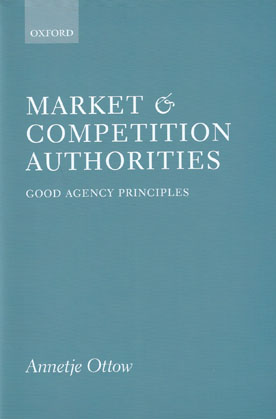
Market and competition authorities operate in a complex environment with conflicting stakeholder demands. Balancing the various interests of the authority and stakeholder in an objective and impartial manner is strategic to achieving the goals of the legislation imposed.
In a fresh approach examining the actions of an authority when a regulation is applied, Annetje Ottow argues the vital importance of the behaviour of authorities, focusing on five fundamental good agency principles: legality, independence, transparency, effectiveness, and responsibility, or, LITER. These principles provide agencies and those reviewing their actions with a framework for agency design and action.
Combining theory and practice to provide insight into agencies' organization and behaviour, this book outlines and analyses behavioural issues using an ecosystemic method, addressing how independent agencies should be assessed, and which principles should apply. Using cases from the Netherlands and the UK, Ottow examines the key processes of authorities against the LITER principles, and opens the debate on 'how to regulate the agency'.